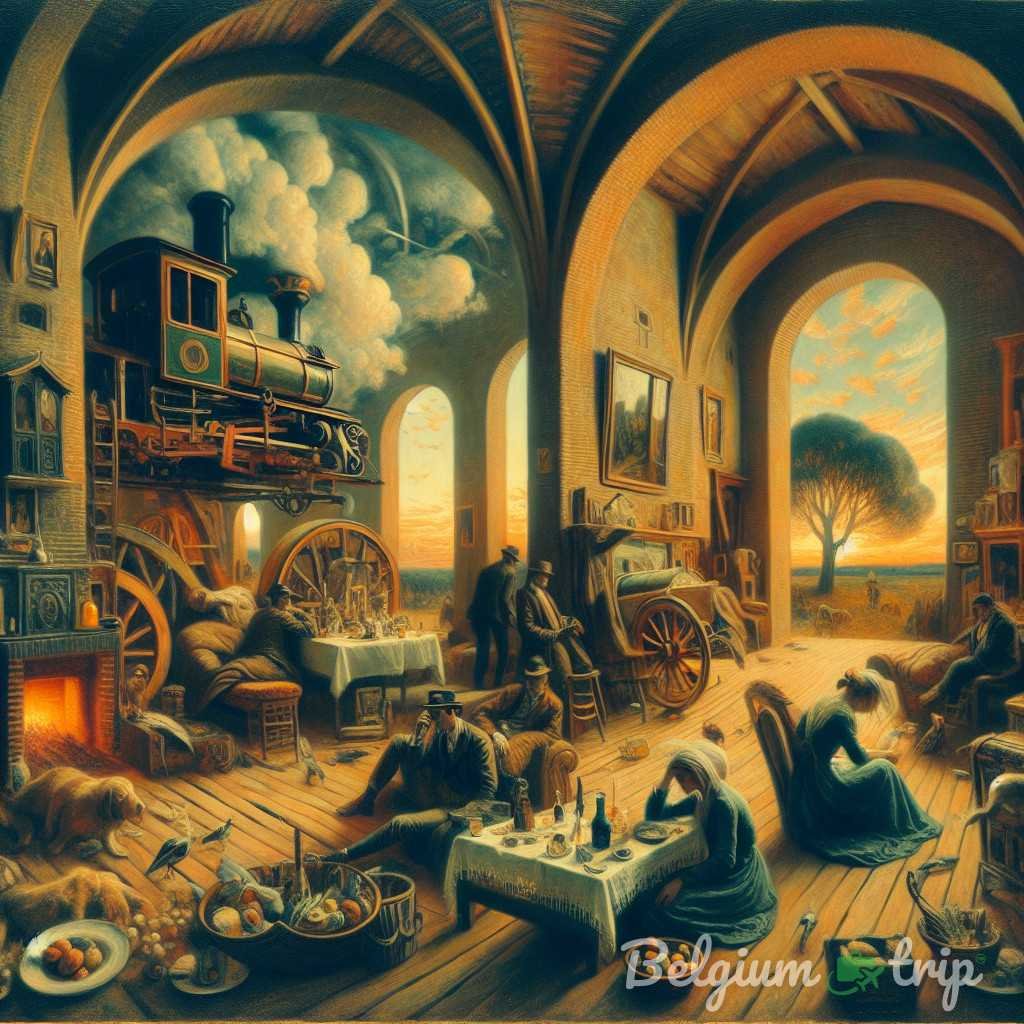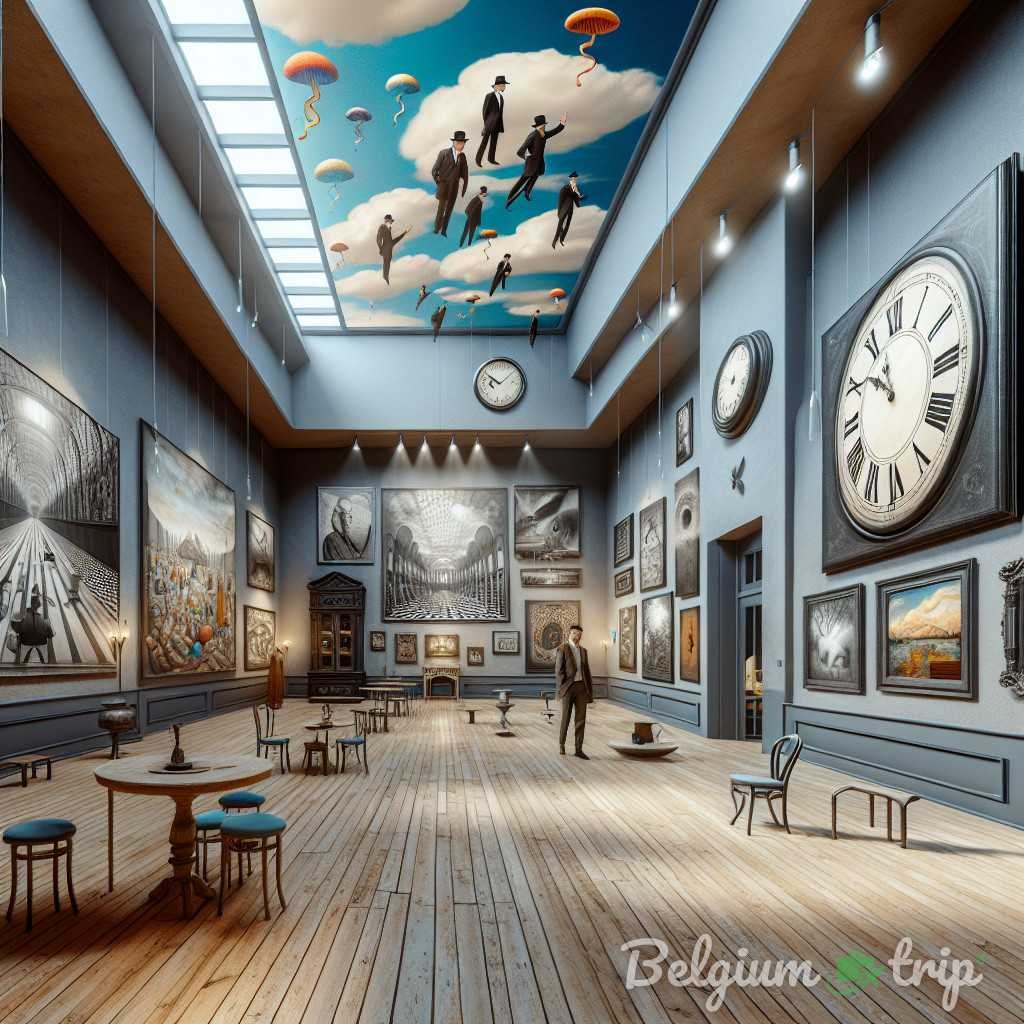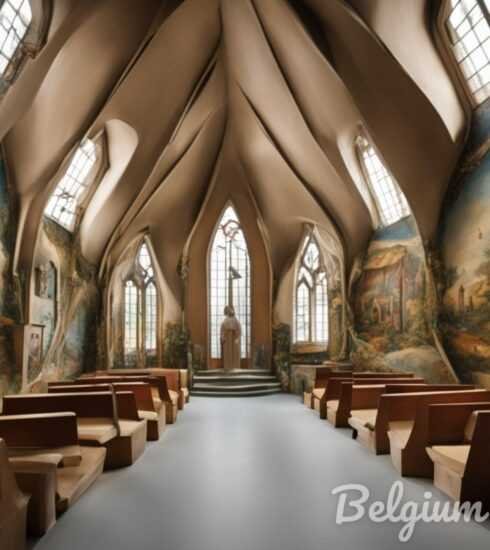Unlocking the Enigmatic World of Belgian Surrealism: The Timeless Influence of René Magritte
The Birth of Belgian Surrealism
Belgium may be a small country, but its contribution to the art world is immeasurable. Throughout its history, Belgian artists have pushed boundaries, challenged conventions, and created groundbreaking works of art. One movement that emerged from Belgium, and continues to captivate audiences around the world, is Surrealism. And at the heart of Belgian Surrealism is the legendary artist René Magritte.
The Early Years
René Magritte was born in 1898 in Lessines, a small town in the French-speaking region of Wallonia, Belgium. From a young age, he showed a keen interest in art and began taking drawing lessons. Magritte’s father, who was a tailor, encouraged his artistic pursuits and provided him with the necessary materials and support.
In 1916, Magritte enrolled at the Royal Academy of Fine Arts in Brussels. There, he met Victor Servranckx, a fellow artist who would later become a key figure in the Surrealist movement. The two became friends and embarked on a journey of artistic discovery together.
Magritte and Surrealism
Surrealism, as an artistic movement, emerged in the early 20th century as a reaction to the rationalism and realism of the time. Influenced by the writings of Sigmund Freud and theories of the unconscious mind, Surrealists sought to explore the depths of the human psyche and tap into the realm of dreams and the fantastical.
René Magritte was drawn to the ideas and concepts of Surrealism and began experimenting with the movement’s techniques and themes. He developed his signature style, characterized by meticulously painted, often dreamlike scenes that defied logic and challenged the viewer’s perception of reality.
The Legacy of René Magritte
Iconic Works
Throughout his career, René Magritte produced a vast body of work that continues to captivate audiences with its enigmatic beauty. Here are some of his most iconic paintings:

- The Son of Man (1964): This painting, featuring a man in a bowler hat with an apple obscuring his face, has become one of Magritte’s most recognizable images.
- The Treachery of Images (1928-1929): Magritte’s famous painting depicting a pipe, accompanied by the words “Ceci n’est pas une pipe” (“This is not a pipe”), challenges the notion of representation and reality.
- Golconda (1953): In this painting, Magritte explores the concept of the self and identity by depicting identical men raining from the sky in a suburban landscape.
- The Lovers (1928): This haunting image of two figures, their faces covered by white fabric, suggests a sense of mystery and the hidden depths of human connection.
Influence on Modern Art
René Magritte’s impact on the art world is immeasurable. His unique blend of meticulous technique and provocative subject matter has inspired generations of artists and continues to captivate audiences today.
His exploration of the relationship between image and reality, the visible and the invisible, has had a profound influence on modern art. Artists such as Salvador Dalí, Max Ernst, and Yves Tanguy were inspired by Magritte’s work and incorporated elements of Surrealism into their own artistic practices.
The legacy of René Magritte can also be seen in popular culture. His iconic images and themes have been referenced in music videos, album covers, and fashion editorials. Magritte’s art has become synonymous with the enigmatic and the mysterious, providing a constant source of inspiration for artists and creatives across various disciplines.
Belgian Surrealism Today
The Belgian Surrealist Group
Although René Magritte is often considered the face of Belgian Surrealism, he was not alone in his exploration of the movement’s concepts and techniques. Magritte was part of a group of Belgian artists known as the Belgian Surrealist Group.
Formed in the late 1920s, the Belgian Surrealist Group included artists such as Paul Delvaux, E.L.T. Mesens, and Marcel Mariën. Together, they organized exhibitions, published manifestos, and pushed the boundaries of artistic expression. Their work was characterized by a sense of mystery, the juxtaposition of unlikely objects, and a dreamlike quality.
The Belgian Surrealist Group had an indelible impact on the art scene in Belgium and beyond. They were instrumental in promoting Surrealism as a legitimate artistic movement and encouraging experimentation and collaboration among artists.

Contemporary Belgian Surrealists
While the Belgian Surrealist Group was active primarily in the mid-20th century, the spirit of Belgian Surrealism lives on in the work of contemporary artists.
Some notable contemporary Belgian Surrealists include:
- Luc Tuymans: Known for his haunting, ambiguous paintings, Tuymans explores themes of memory, history, and the power of images. His work often blurs the line between reality and fiction, inviting viewers to question their assumptions.
- Wim Delvoye: Delvoye’s provocative and intricate artworks often fuse traditional craftsmanship with unexpected materials and subjects. His sculptures, installations, and intricate tattoo designs challenge societal norms and push the boundaries of artistic expression.
- Delphine Boël: Boël’s mixed-media works combine elements of sculpture, painting, and collage to create visually stunning and thought-provoking pieces. Her art explores themes of identity, transformation, and the fragility of existence.
These artists, along with many others, continue to push the boundaries of Belgian Surrealism, creating work that challenges and delights viewers in equal measure.
A Tribute to René Magritte: Museums and Exhibitions
René Magritte’s work is celebrated and revered around the world. For those interested in delving deeper into the world of Belgian Surrealism, there are several museums and exhibitions dedicated to the artist and the movement he helped popularize.
Magritte Museum – Brussels, Belgium
Located in Magritte’s hometown of Brussels, the Magritte Museum is a must-visit for any art lover. The museum houses the largest collection of Magritte’s work in the world, with over 200 paintings, sculptures, and photographs on display. Visitors can explore the artist’s evolution, from his early experiments with Cubism to his iconic Surrealist masterpieces.
The Magritte Museum also showcases works by other Surrealist artists, offering a comprehensive overview of the movement and its lasting impact on art history. The museum’s collection includes pieces by Salvador Dalí, Max Ernst, and Joan Miró, among others.
Belgian Surrealism: A Legacy in Motion

To truly appreciate the legacy of Belgian Surrealism, it is important to explore the wider context of the movement and its influence on modern art. The exhibition “Belgian Surrealism: A Legacy in Motion” aims to do just that.
This immersive exhibition brings together works by René Magritte, as well as other Belgian Surrealist artists, to explore the themes, techniques, and ideas that defined the movement. Visitors can expect to see iconic paintings, rare photographs, and ephemera that shed light on the Belgian Surrealist Group and its impact on art history.
Other Surrealist Exhibitions and Collections
In addition to the Magritte Museum and the “Belgian Surrealism: A Legacy in Motion” exhibition, there are other institutions and galleries around the world that celebrate the legacy of Belgian Surrealism. Some notable exhibitions and collections include:
- Tate Modern – London, United Kingdom: The Tate Modern houses an impressive collection of Surrealist art, including works by René Magritte and other Belgian Surrealist artists. Visitors can explore the diverse range of works that shaped the movement and continue to inspire artists today.
- Museum of Modern Art – New York, United States: The MoMA boasts an extensive collection of Surrealist art, with works by Magritte, Dalí, and Ernst, among others. The museum regularly organizes exhibitions dedicated to Surrealism and its influence on modern art.
- Musée d’Orsay – Paris, France: While not exclusively dedicated to Surrealism, the Musée d’Orsay houses several notable Surrealist artworks, including pieces by Magritte and Belgian artist James Ensor.
Whether visiting one of these institutions or exploring the world of Belgian Surrealism through online exhibitions and collections, art enthusiasts can immerse themselves in the strange and fascinating world of the movement.
In Conclusion
Belgian Surrealism, with René Magritte at its center, has left an indelible mark on the art world. From Magritte’s enigmatic paintings to the broader exploration of the movement by the Belgian Surrealist Group, the legacy of Belgian Surrealism continues to captivate audiences today.
Through its exploration of the subconscious, dreams, and the irrational, Surrealism challenged traditional notions of art and reality, creating a space for imagination and experimentation. Belgian Surrealism pushed the boundaries of artistic expression and continues to inspire contemporary artists who seek to explore the depths of the human psyche.
So, whether you’re visiting the Magritte Museum in Brussels, discovering the works of contemporary Belgian Surrealists, or exploring Surrealist exhibitions and collections around the world, be prepared to step into a world where the ordinary becomes extraordinary, and reality is anything but what it seems.
External link: To learn more about René Magritte, you can visit his Wikipedia page.




